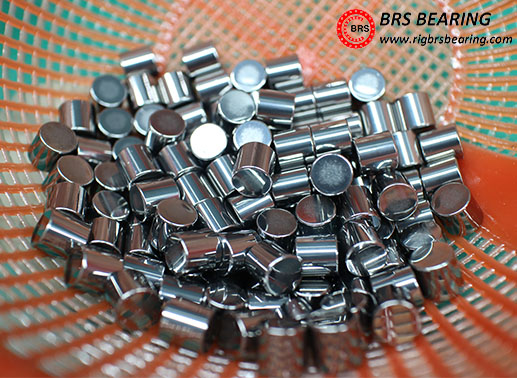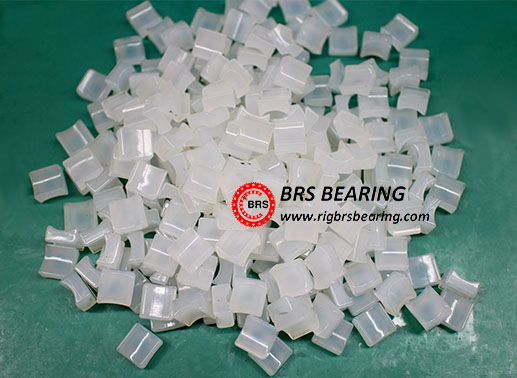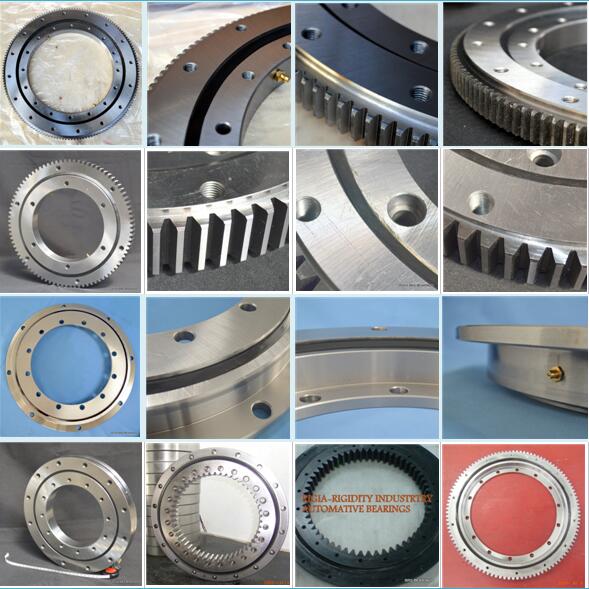Crossed Roller Bearing Assembly – Demystifying high precision bearings
Crossed roller bearing can take radial, axial loads, as well as the moment loads at the same time, has high stiffness, and can simplify the design of the mechanism. So it's become more and more popular these years, especially in applications which have high requirements for precision. Have you seen the internal structure of the cross roller bearings? And do you know how the crossed roller bearing is assembled?

Cylindrical Rollers 
Space Retainers
Crossed roller bearing assembly has different methods according to the structure of bearings. Below are two main methods.
Cross roller bearing with split inner ring or split outer ring
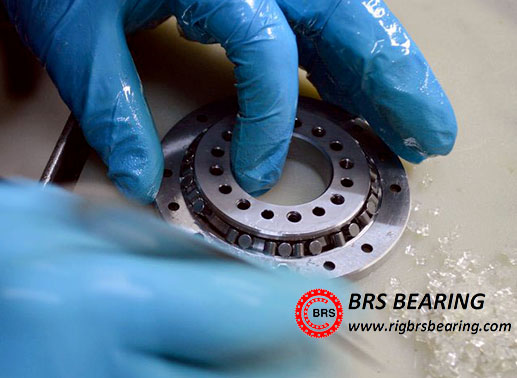
Assemble the integrated ring with half of the split ring first, then a 90° V shape groove is formed as the raceway. Cylindrical rollers and space-retainers are placed on the raceway with a tweezer. Rollers are separated by space-retainers, and each roller is perpendicular to the adjacent one. After all the rollers and separators are arranged on the raceway, assemble the left half one of the split ring and fix the split rings together with bolts or screws.
Crossed roller bearing assembly of integrated inner and outer ring type
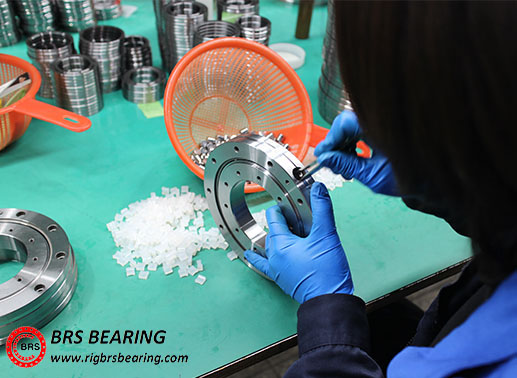
For bearings with solid one-piece inner and outer ring(such as RU crossed roller bearing), the assembly is more difficult. Workers need to put in the rollers and separators through a load plug hole, which is narrow and dark. So only skilled workers can assemble the bearings well and ensure its accuracy. After cylindrical rollers and spacer retainers are arranged well, a load plug will be filled into the hole and fixed by a small taper pin.
After crossed roller bearing assembly, the production is not finished yet. We need to do several inspection items like rotation tests and dimensional tests. If any test result is not qualified, bearings will be disassembled and returned to the previous processing procedure. All BRS made cross roller rings are after examination and please note that users shall not disassemble the bearings without consulting with us, this may affect bearings precision and performance.

